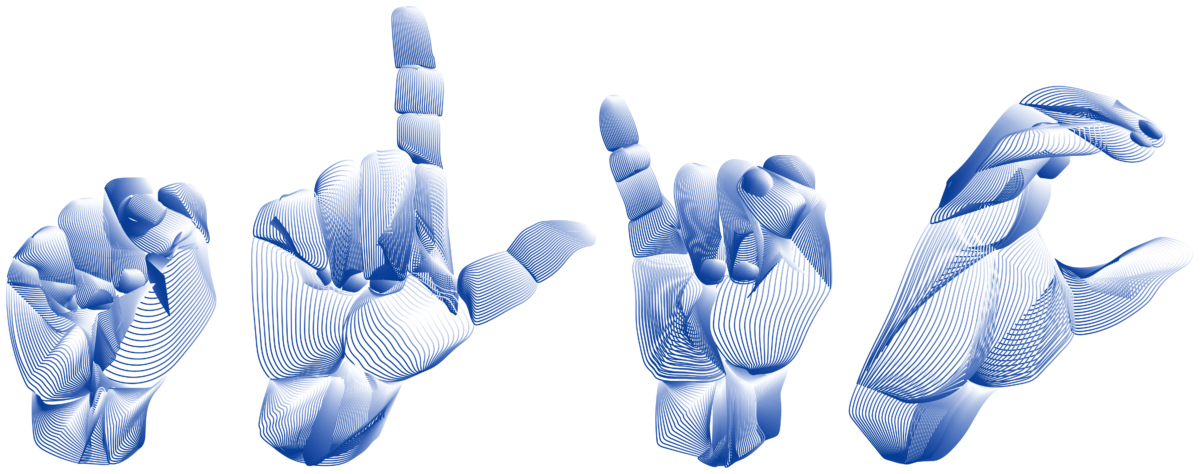Media Arts Grade 12 Curriculum
This course emphasizes the development of the knowledge and skills required for the production
of interactive De’VIA media art forms (e.g., interactive art installations, interactive videos, simulations, network art). Students will analyse and evaluate De’VIA media art works, and will create their own works using a variety of technologies and processes (e.g., computer graphics, photo-imaging, digital video production techniques). Students will maintain a portfolio of their media art works that reflects their Deaf experience.
Note: With the emerging interplay between the Deaf experience and the current media arts, this presents an opportunity for students to explore and combine the Deaf experience, especially through the integration of De’VIA characteristics with current media arts.
Reference: For a list of links, please click on “Media Arts Resources”.
Overall Expectations
By the end of this course, students will:
• demonstrate an understanding of the basic concepts (e.g., De’VIA elements, principles) and procedures used in media arts, as well as selected emerging technologies;
• describe interactive De’VIA media art works in terms of their historical foundations;
• demonstrate an understanding of conventions used in the practice of media arts.
• use De’VIA concepts in the production of media art works;
• use both traditional and emerging technologies, procedures, and techniques to create De’VIA media art works;
• use and adapt the stages of the creative process in individual and collective productions;
• choose concepts and procedures from other art forms and other disciplines, and apply them appropriately in their media art works.
• evaluate an interactive De’VIA work of art, demonstrating an understanding of the process of critical analysis;
• analyse and evaluate the impact of works of media art on themselves and on their communities.
Specific Expectations
By the end of this course, students will:
• describe the use of various new technologies that promote inclusion of De’VIA characteristics, particularly those used in interactive media art forms (e.g., internet site).
• explain the development of media art forms in terms of their origins in traditional art forms (e.g., signing holography in terms of handshape sculpture; performance art fusing several different elements – closed captioned production along with colourful lighting to express music in terms of drama and dance);
• describe the contribution of new technologies to the Deaf community in terms of media arts (e.g., the effect of fusing elements of Deaf culture into robotics on robosculpture or of technology on artists’ collective creations);
• research a variety of techniques and procedures and use them appropriately in a work of De’VIA media art, demonstrating an understanding of the use of some specific elements, principles, or concepts;
• communicate a message about Deaf experience using emerging technologies (e.g digital video editing);
• produce a digital portfolio of De’VIA art works using analog and digital encoding procedures (e.g., CD-ROM, interactive multimedia work, Internet site);
• document the stages of the creative process used for an individual or group project in De’VIA media arts (e.g., document the process involved in the collection of material and in design work, production, and feedback relating to the creation of a promotional CD-ROM or a network art site in cyberspace to distribute De’VIA art work);
• evaluate interactive De’VIA art works, following standard procedures in critical analysis (e.g., consider their initial reaction; describe the works using appropriate terminology; analyse and interpret the works; evaluate the effectiveness of the works in expressing Deaf experience);
• anticipate and analyse the impact of their own art work on specific audiences (e.g., Deaf and/or hearing audiences), including themselves;
• analyse and compare ways in which works of De’VIA media art influence various audiences and ways in which dynamic interaction with those audiences (e.g., Deaf and/or hearing audiences) can affect the meaning of a work which reflects the Deaf experience;
• analyse ways in which De’VIA media arts can form and represent the viewpoints and values of different representative groups (e.g., Deaf cultural community, mainstream community, region and age group).



